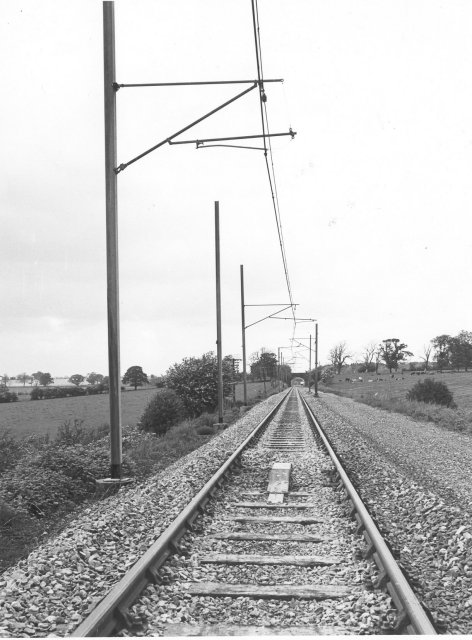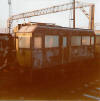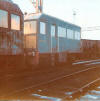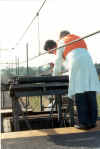
Lab Coach 1 RDB975000 (right) stands near the overbridge on the A46 in the company of High Speed Freight Vehicle 1 (HSFV1) RDB511023 and High Speed Freight Vehicle 4 (HSFV4 - a Ferry Van) RDB 787319, parked some distance away, during static vibration tests on the overhead line in the mid 1970's.
Author's collection

A closer view of the test. Various instruments were fitted to the overhead line during this type of test to monitor the movements. A hydraulic ram was connected to the OHLE for the tests and a series of vibration tests were undertaken. The tripod of scaffold poles is there to anchor the catenary and contact wire for the trial.
Note that the coach has its original BR1 bogies - later it was fitted with APT-E LC1 bogies for high speed running.
Author's collection
Colin Marsden
Author's collection
Due to the effects of sunlight spoiling the tests, as it caused the wire to expand, further work was conducted at night when the temperature was more stable. A dramatic shot of HSFV4 shows the hydraulic ram on the track and the instrument cables hanging from the OHLE. This was taken in the vicinity of 114 MP at the top of the Widmerpool straight. Lab 1 can be seen in the background.
Author's collection































